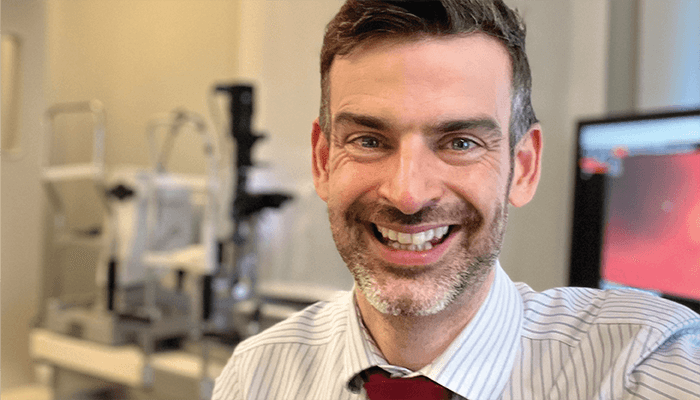
The LiGHT study changed glaucoma practice in 2019 (1). Many practitioners used this evidence to inform a discussion of primary drops versus primary selective laser trabeculoplasty (SLT) for ocular hypertension (OHT) and glaucoma, resulting in two valid primary treatment options. Now, the UK’s National Institute for Health and Care Excellence (NICE) has assessed the burgeoning evidence and recommended that SLT should be the only therapy offered at diagnosis, with medication reserved for those patients unwilling to receive, unsuitable for laser, or where laser is not available (2). NICE defines UK practice, but the ripples can be felt across Europe, Asia and the US. It’s great to see SLT allowed the prime position that I feel it should have. Hopefully, the number and availability of SLT devices increases quickly, as demand is large. The next logical step is to study whether we can safely extend patient follow-up duration (to 18 or even 24 months) subject to an adequate response to SLT and if other criteria are met. Predictable effect without adherence/compliance issues and greater diurnal flattening of IOP may well allow our overstretched services to decompress our lower risk patients due the added confidence SLT confers to their care.
A shift in MIGS disease control metrics
The HORIZON study looking at five-year data on Hydrus Microstent is a real shift in the quality of evidence supporting MIGS devices (3). We’ve progressed from IOP results muddied by the phaco effect, to more representative device-only outcomes, not only for efficacy but safety, quality of life, and – most recently – cost–benefit data. However, until now, disease control metrics have not been well studied or proven. We extrapolate target IOP from studies 20-40 years old but the preliminary results from HORIZON suggest that Schlemm’s canal scaffolding can lower the rate of visual field loss by 47 percent across all patients enrolled (and includes control for the cataract surgery element alone). I’m reserving full judgement until the full paper emerges later this year, but this sort of data is really moving the field forwards. We need data like this to fuel better discussion with our patients about the benefits of all MIGS procedures and back up our negotiations with payors as the MIGS arena become more divergent, expensive and popular.
The author reports no personal financial disclosures relating to Hydrus Microstent.
References
- G Gazzard et al., “Selective laser trabeculoplasty versus eye drops for first-line treatment of ocular hypertension and glaucoma (LiGHT): a multicentre randomised controlled trial,” Lancet, 393, 1505 (2019). PMID: 30862377.
- NICE, „Selective laser therapy recommended to treat glaucoma and ocular hypertension” (2022). Available at: https://bit.ly/3pRfYzd.
- I Ahmed et al., “5-year follow up from the HORIZON trial.” Presented at the American Glaucoma Society (AGS) Virtual Annual Meeting; March 4-7, 2021.
